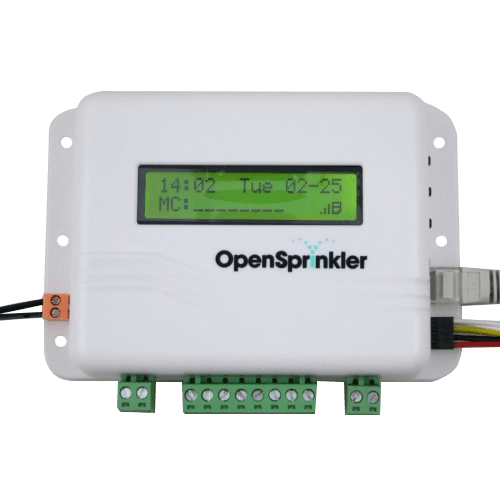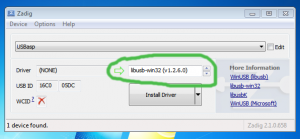I am excited to announce that OpenSprinkler Firmware 2.1.0 is officially release. This is a major upgrade that includes a number of new features, including:
- Automatic Weather-based Water Time Adjustment using real-time weather data obtained from Wunderground (thanks to Rich Zimmerman who introduced the method, the adjustment method is named after him).
- Improved Program Settings including per-station water time, flexible start times, custom name, per-program weather adjustment control, and up to 14 different programs.
- Automatic Timezone and DST Detection based on your location. No need to select time zone and mess with DST any more — once you set your location, the firmware can automatically determine your time zone and DST.
- Improved Station Attributes and Scheduler including station ‘disable’ attribute, ‘activate relay’ attribute, test station feature (replacing the previous manual mode), automatic serialization of overlapping schedules, and the ability to manually start a program on the controller using buttons.
- Numerous UI Improvements (thanks to Samer’s hard work) including unified mobile interface, export / import configurations, improved visualization of logging data, and the number of supported languages has expanded to 17 (thanks to all who contributed)!
This is a pretty major milestone as it not only addresses the previous limitations but also introduced critical new features including weather-based control. Furthermore, consider all these are implemented on a small microcontroller with only 64KB flash memory and 4KB RAM 🙂 These significant changes are worth making a new video for. So here is the video tutorial for firmware 2.1.0 (it’s a bit long, but gives you a comprehensive overview of the main features);
Documentation
With this firmware I’ve also written a more detailed user manual, and API documentation. These are available on the Support page of our new website www.opensprinkler.com. In addition, there are a total of 4 tutorial videos that walk you through the hardware installation, WiFi connection, firmware features, and upgrading firmware. Be sure to check them out first.
Upgrade to Firmware 2.1.0
All OpenSprinkler 2.x devices (including 2.0, 2.1, and 2.2) are eligible to upgrade to firmware 2.1.0. Please check the ‘Firmware Update’ instructions on the support page to download and run the firmware updater. OpenSprinkler 2.0 and 2.2 are the easiest as drivers are pretty straightforward to install, and there is no bootloading procedure; OpenSprinkler 2.1 is tricky because the driver installation is more involved, and there is a bootloading procedure you need to follow. In any case, the firmware upgrade tutorial video gives you a quick walk-through of all the steps.
To use the weather feature, you need to apply for a Wunderground API key. Again, instructions can be found on the support page.
Firmware 2.1.0 has gone through internal alpha testing and external beta testing, so it should be pretty stable. For issues and suggestions, please use the forum, or the support page to submit support tickets.
Implementation
When I say ‘all these are implemented on a small microcontroller with only 64KB flash memory and 4KB RAM’, it’s not entirely true — the weather feature and timezone / DST detection are actually implemented using Python scripts hosted at www.opensprinkler.com. Why? Because these require fairly heavy processing power that’s simply beyond the capability of a small microcontroller. So they are implemented by using Python scripts that serve as the ‘middle man’ — retrieving data from weather websites, perform the necessary parsing and computation, and produce the final results to send back to OpenSprinkler. This way the heavy computation is done in the cloud, and OpenSprinkler only needs to poll the server once in a while to update the results. If you are interested in customizing the scripts, you can download the Python scripts from OpenSprinkler Github repository, modify them and host them on your own server. But for most people the default provided script should work pretty well.
Upcoming Features
As this firmware has been rolled out, we are getting excited to decide on the new features for the next round. Some planned features include:
- Additional station attributes including soil type, slope type, serial group.
- Support to store programs and station settings onto the microSD card (effectively allowing unlimited programs).
- Adding firmware support to interface with remote power sockets, so you can use OpenSprinkler to control power line devices like heaters, fan, Christmas lights etc.
- Support to use sunset and sunrise times for program start times (the sunset and sunrise times are already being detected using the timezone / DST script).
- Support for flow sensor to monitor water consumption.
- Cloud support: no more messing with port forwarding.
Suggestions and comments are welcome. Please post them below, or on the forum. Thanks!


